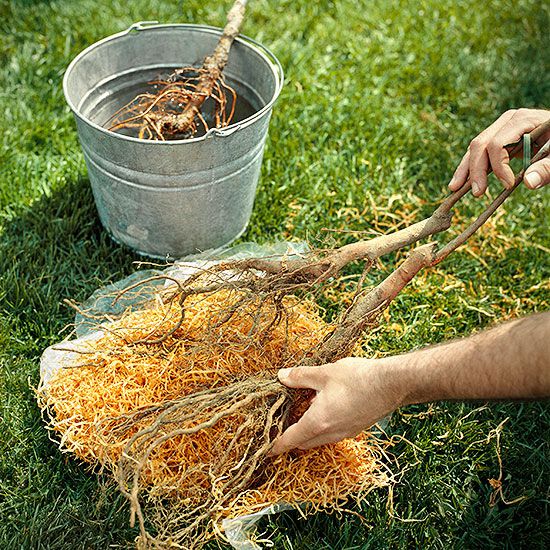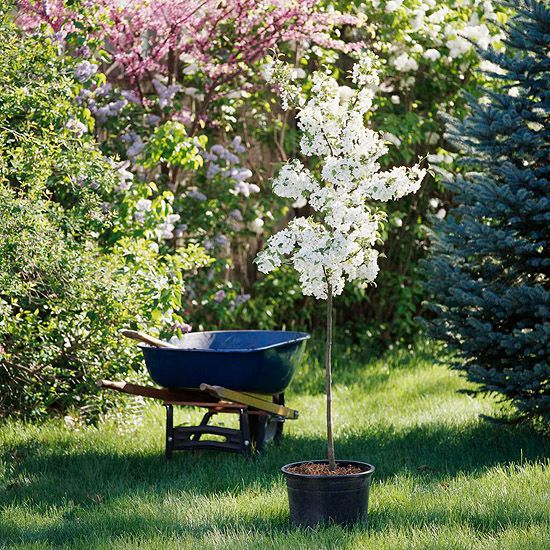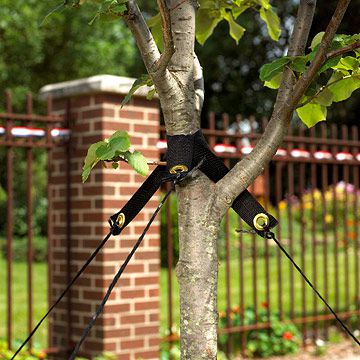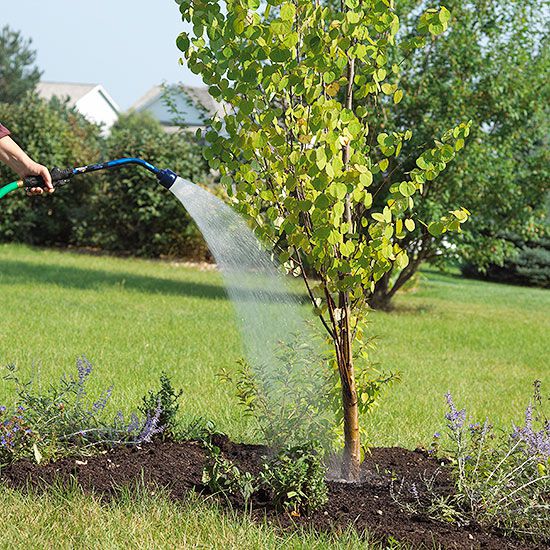Written by Admin and published on https://www.bhg.com/.
Trees, shrubs, and vines are essential elements in your landscape, adding structure, texture, and color as well as establishing focal points. Fortunately, taking care of trees, shrubs, and vines can be easy, but it does require knowing the basics, and learning insider tips will help your plants reach their full potential.
Tree & Shrub Care Guide
Use these tips to ensure the trees and shrubs in your landscape stay healthy and beautiful. May 06, 2016

You’ll find trees and shrubs sold three different ways, depending on the time of year and where you shop.
1. Bare-root plants are typically available in late winter or early spring and are purchased while they’re dormant. Bare-root plants are typically the least expensive because they don’t have the cost of soil or containers associated with them.
2. Balled-and-burlapped plants, often simply called B&B, are available from spring to fall. They feature a root ball in soil that’s surrounded by a large burlap (or similar material) bag. Balled-and-burlapped plants are usually the largest specimens your nursery offers.

3. Container-grown trees and shrubs are the most commonly available. They’re probably what you think of when you look for plants at your local nursery. Like balled-and-burlapped plants, they’re typically available throughout the year. However, they come in a wide range of sizes.
Planting Tips
No matter which method you use to plant your trees and shrubs, water them well after planting. Spread a 2- to 3-inch-deep layer of mulch over the soil around the plant; this creates a protective zone so you don’t have to mow lawn grasses right up against a newly planted tree (and risk damaging its young bark). It will also help the soil maintain its moisture level longer, so you have to water less.
Staking

You may need to stake newly planted trees, especially if you planted them as bare-root or if you have a hard time keeping them upright. Support them only for the first year or two; remove the stakes after that so your trees and shrubs can develop a sturdy trunk and root system.
One of the simplest ways to support a young tree is to use a single stake about as tall as the tree. Drive the stake in the ground about 18 inches deep and about 6 inches away from the edge of the planting hole. Use heavy wire wrapped by a section of old garden hose and tie the tree to the stake using a figure-8 pattern. (The hose prevents the wire from grinding against the bark.)
Test Garden Tip: Avoid pulling the wire tight because it can damage the tree. The trunk should be able to move lightly in any direction if you push against it.
Pruning

Many trees and shrubs benefit from a little pruning throughout their life. The process may seem complicated, but follow these guidelines to make it easier.
What to Prune: No matter what trees and shrubs you’re growing, it’s a good idea to prune out any dead or diseased branches. This helps the plant look better and can prevent the disease from spreading.
You should prune out any wayward stems that block pathways, driveways, or grow into the side of a house or other structures. Also remove branches that cross and rub against one another; as the bark gets rubbed off, it makes the tree more susceptible to disease.
Prune most summer-flowering shrubs (including rose of Sharon, butterfly bush, ‘Annabelle’ hydrangea, and spirea) in late fall, winter, or early spring.
Test Garden Tip: Dip your pruning shears in a bleach or rubbing alcohol solution between cuts. This prevents the disease from spreading to healthy branches. Get more tips on pruning trees. Learn more about pruning shrubs.
Watering

Once established, most trees and shrubs don’t need much watering except during periods of extended drought. The plants’ root systems are good at finding moisture, which is why the ground is often so dry around a tree.
But trees and shrubs typically appreciate reliable moisture the first year or two they’re planted or transplanted to help them become established. Give young specimens an inch or so of water a week.
Evergreens benefit from abundant watering in autumn. In fact, some garden experts say that fall is the most important time to water these plants. If they don’t get enough moisture in fall, they’re much more likely to suffer winter damage.
Feeding
Many trees and shrubs don’t need supplemental nutrients from fertilizer to stay healthy. But in areas with poor soil, or in subdivisions where nutrient-rich topsoil has been removed, fertilizing can be helpful to plants.
In most cases, all you need is a general-purpose fertilizer. Use either fast-acting or slow-release types, and choose from commercial and organic products. Follow the directions on the packaging no matter what type of fertilizer you use.
You might be tempted to add more fertilizer than recommended, but this can be a bad thing. Overfertilization can burn plant roots, causing injury to the plant. Flowering trees and shrubs that get more fertilizer, especially nitrogen, than they need, may flower less than varieties that are not overfertilized.
Original post https://www.bhg.com/gardening/trees-shrubs-vines/care/tree-shrub-care-guide/.


